Hydro-solver Validation with Fixed Open Slot
Simulation 1 (gamma=1.24, p0=100 kPa)
Simulated and actual schlieren images show good agreement (time below graphics counts after detonation wave has reached the middle of the slot).
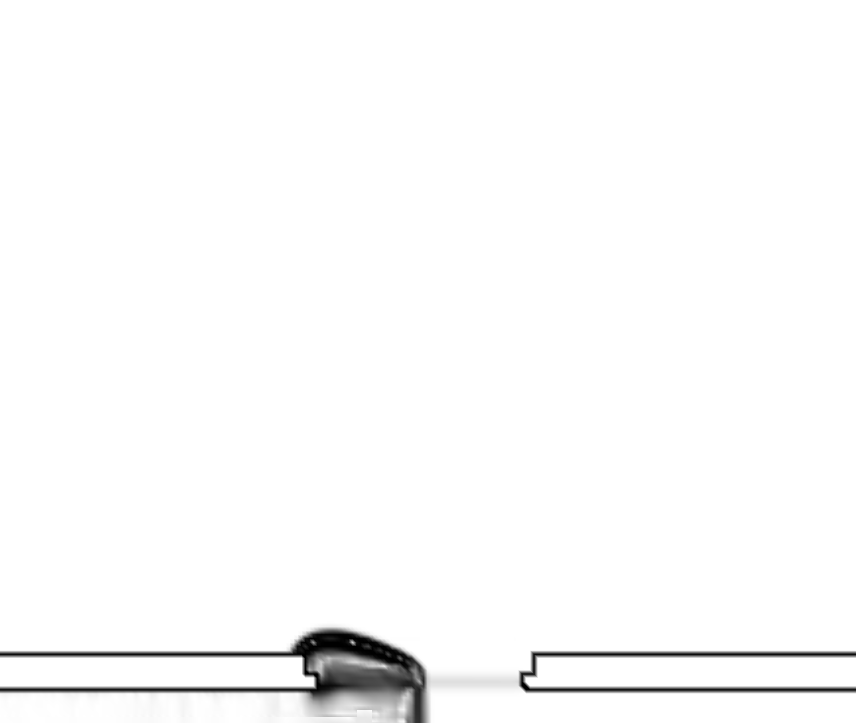 | 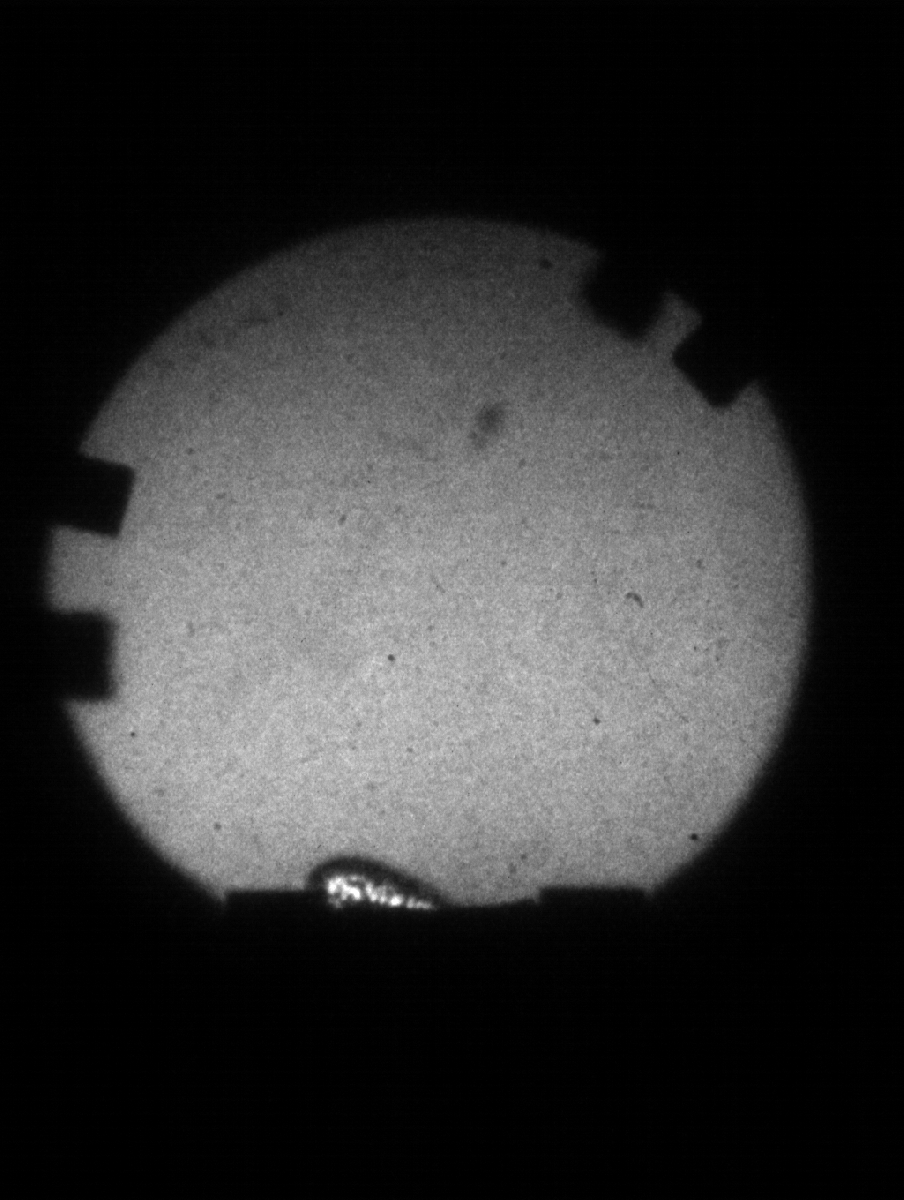 | 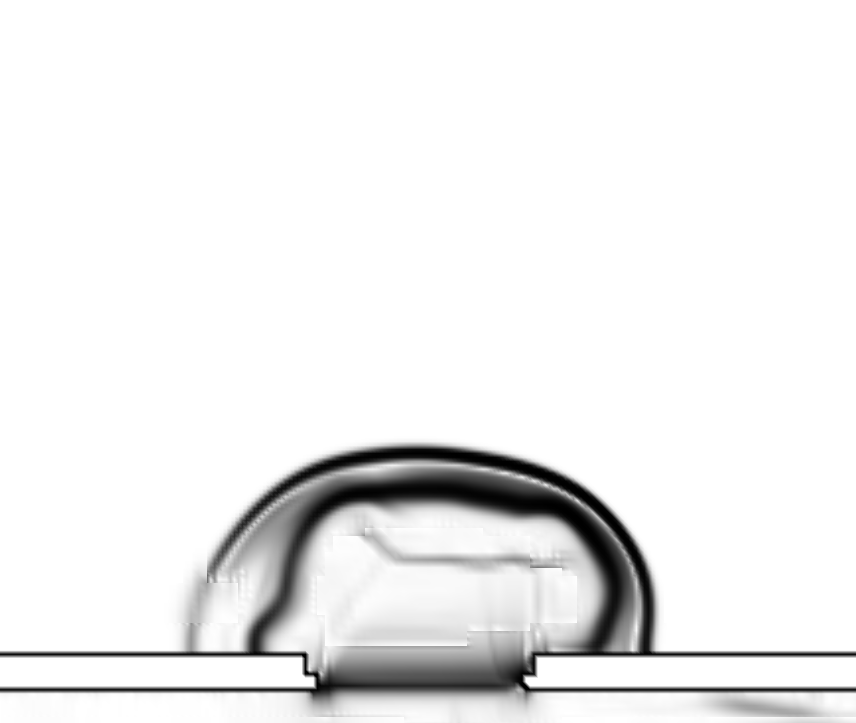 | 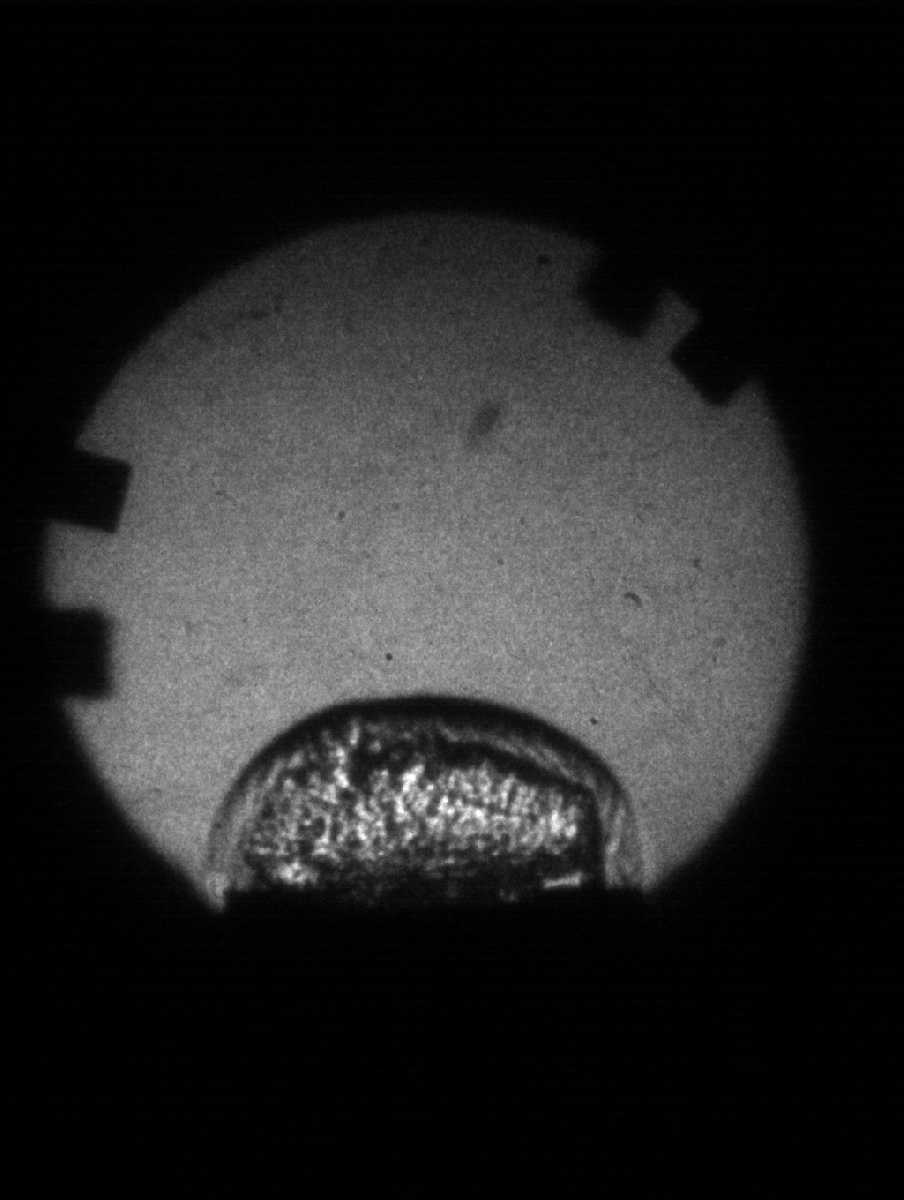 |
| 0 micro-seconds | 30 micro-seconds |
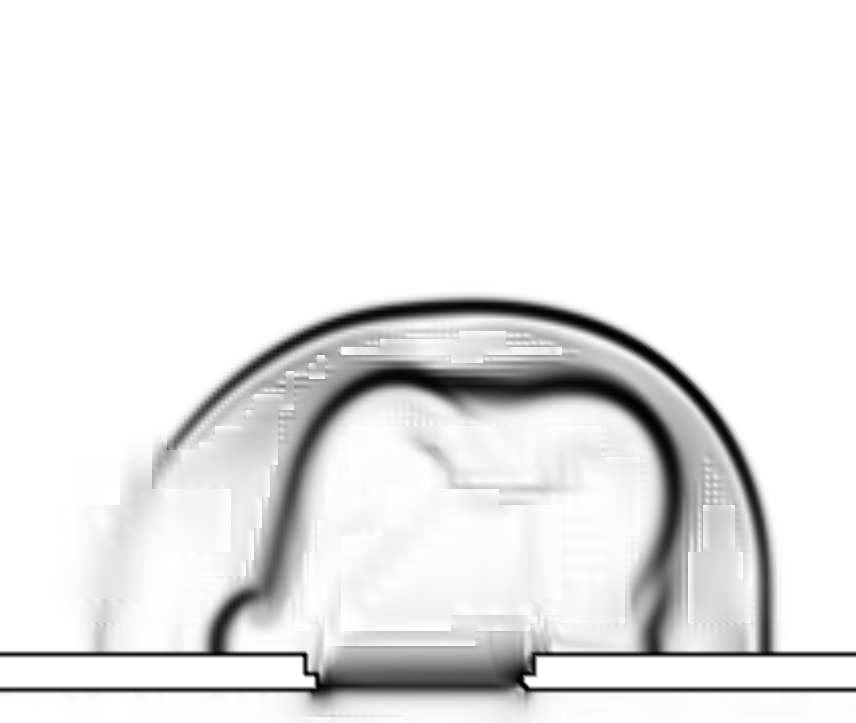 | 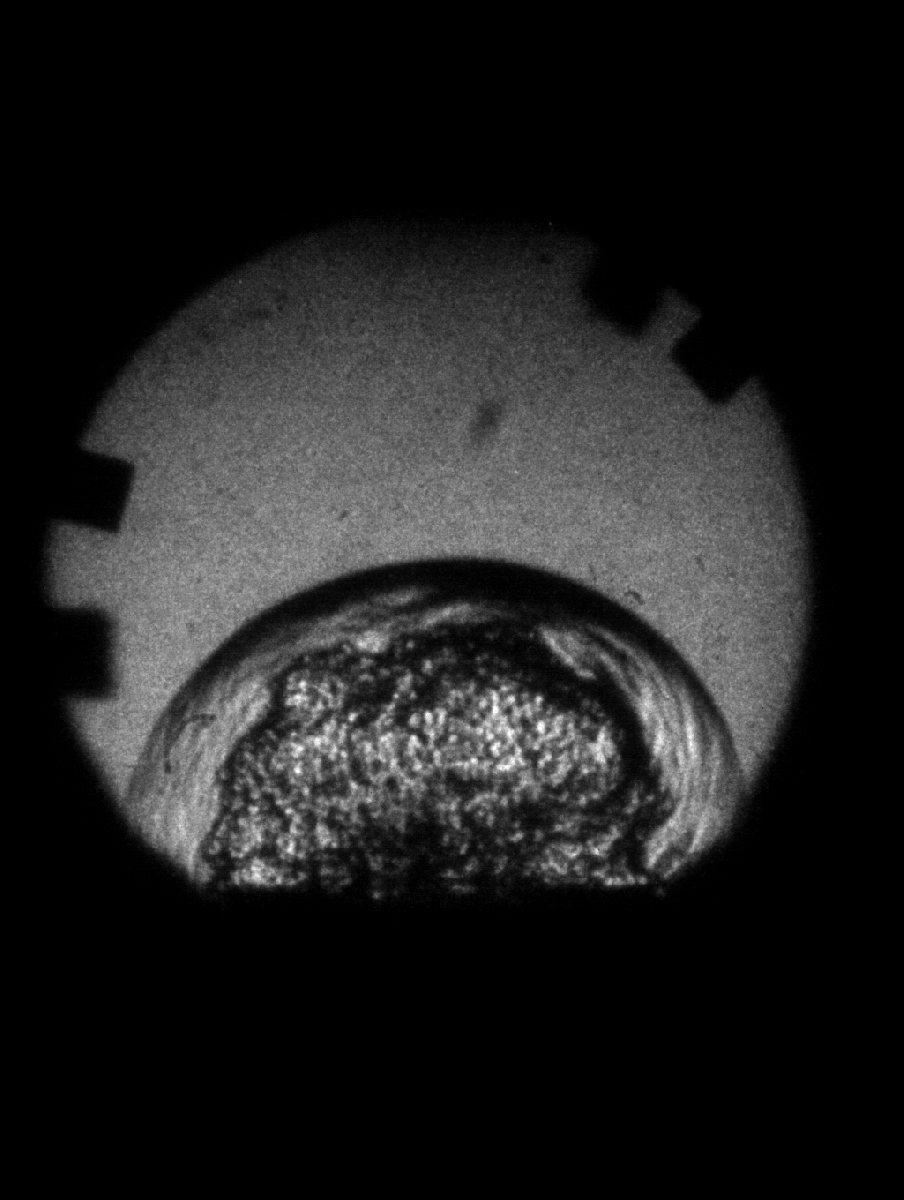 | 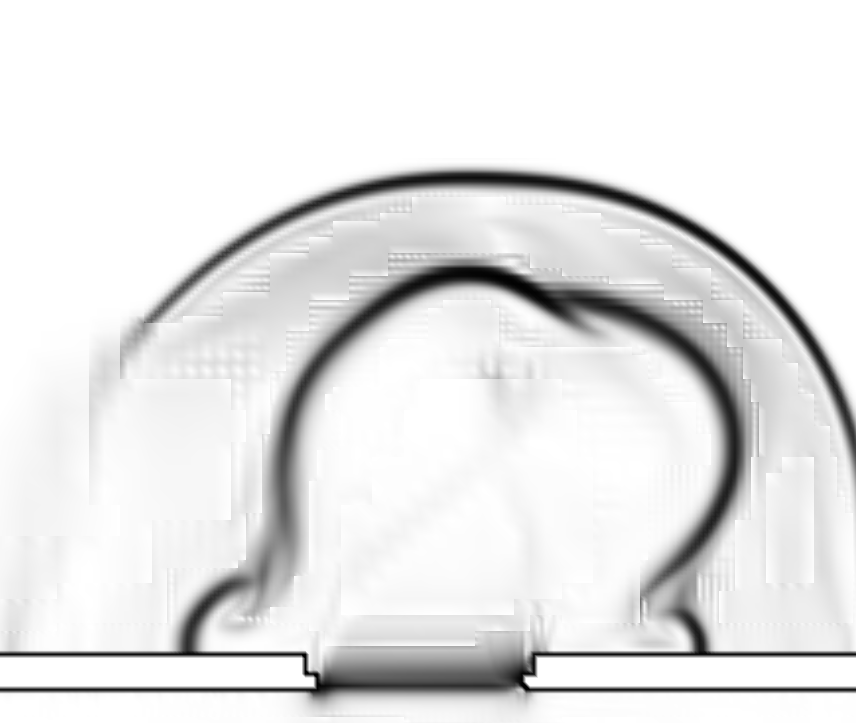 | 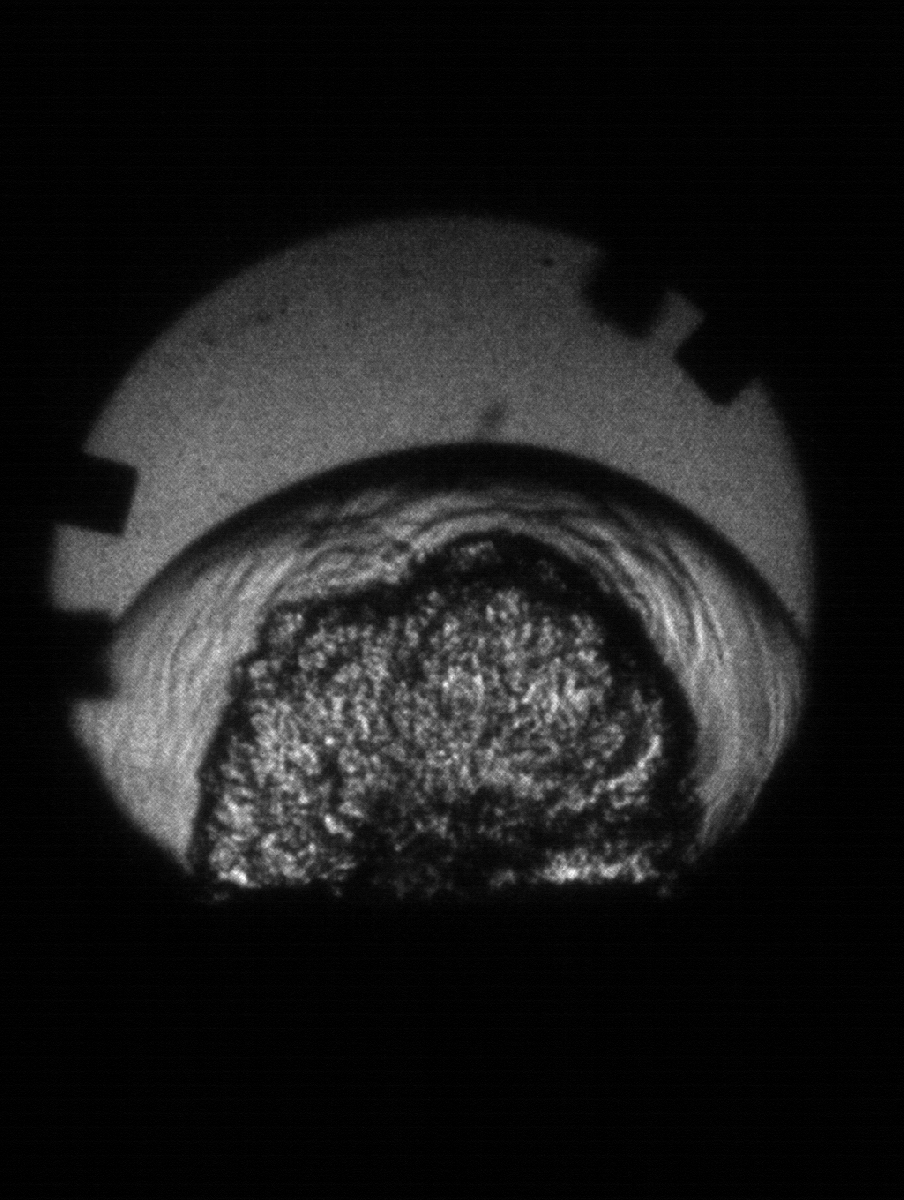 |
| 60 micro-seconds | 90 micro-seconds |
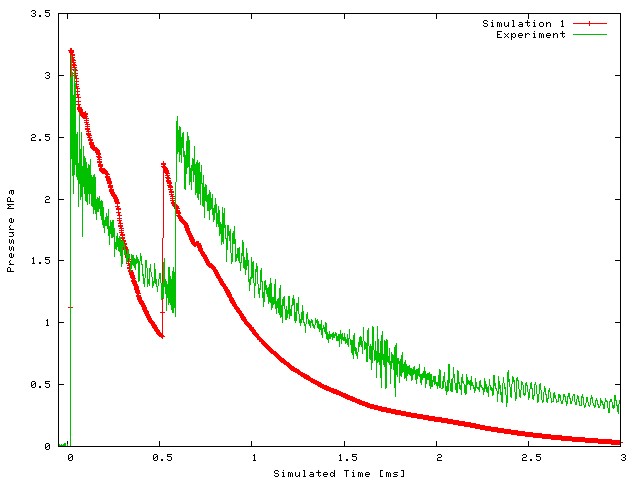 | 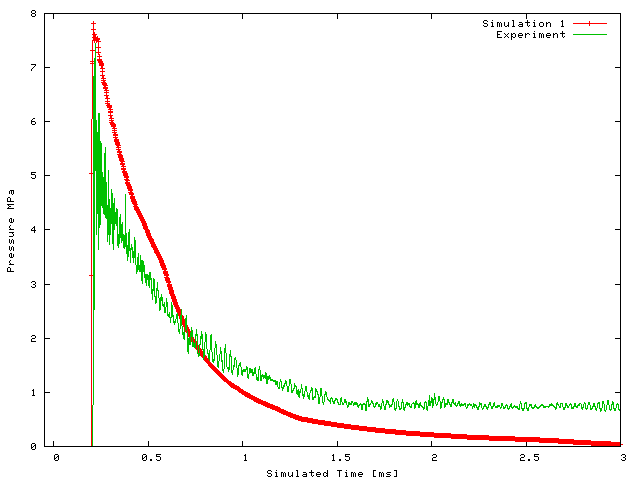 |
| z=0.444m (overall distance 1.964m) | z=0.896m, (overall distance 2.416m) |
- Blast pressure traces at 90 degree
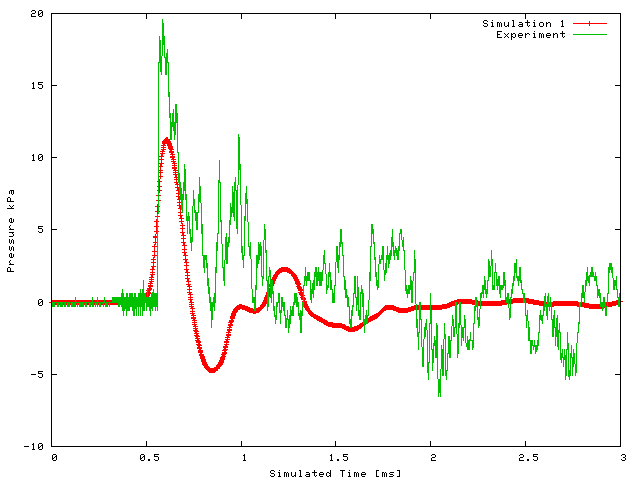 | 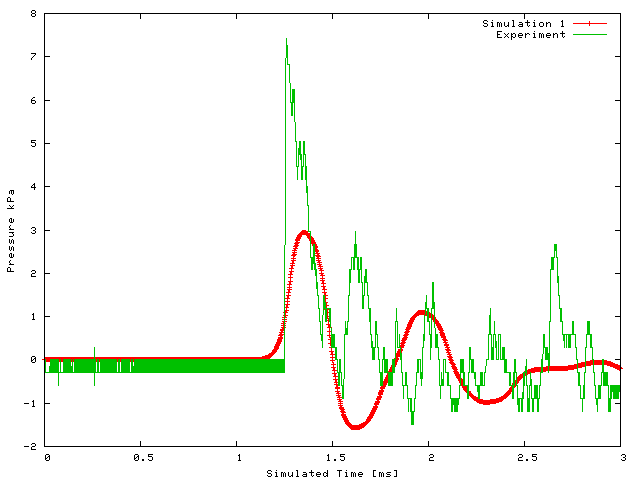 | 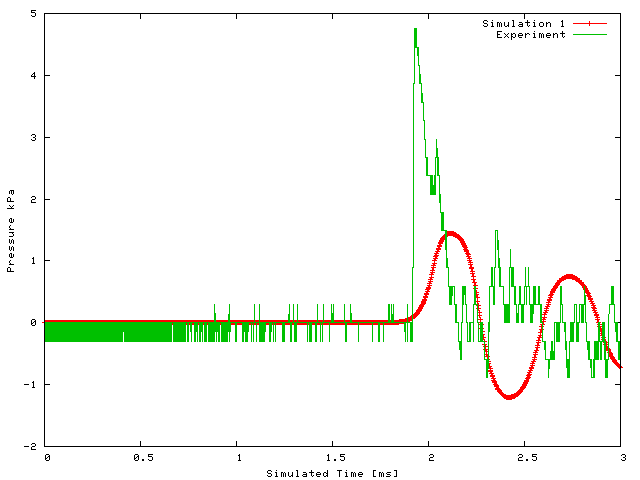 |
| Distance 250mm | Distance 500mm | Distance 750mm |
- Peak blast pressures. The maximal values are necessary lower in the simulation, because it is basically imposssible to provide the necessary resolution at these distances with a shock-capturing method (even with SAMR).
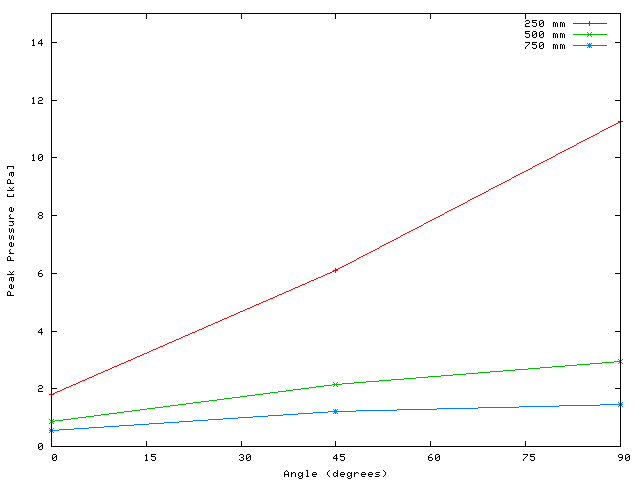
- Simulation details
- Van Leer flux vector splitting with 2nd order MUSCL reconstruction, dimensional splitting
- CJ volume burn model
- Computational domain: [0m,0.81m]x[-0.0375m,0.8175m]x[-0.9200m,0.8960m]
- AMR base level: 108x114x242, 4 additional levels, refinement factor 2,2,2,2
- Equivalent unigrid run 12,204,048,380 cells
- Approx. 6,000,000 cells used in fluid on average
- Tube and detonation fully refined
- No refinement for z<0 (to approximate Taylor wave)
- No maximal refinement for x>0.1125m, y>0.1125m, z<0.37m, z>0.52m
- Thickening of 2d mesh: 0.445mm on both sides additional to real thickness of both sides 0.445mm
- 16 nodes 2.2 GHz AMD Opteron quad processor, PCI-X 4x Infiniband network
- Solid mesh
- Specimen from z=0 to z=0.896m, middle axis along z-axis
- Middle of slot at x=0.0m, y=0.020195m, z=0.444m
- Mesh: 28279 nodes, 56562 elements
- Close-up of slot in solid mesh, middle of slot at x=0.0m, y=0.020195m, z=0.444m
- Ca. 3300h CPU to t=3.0 milli-seconds
- Source code: [codes]
Simulation 2 (gamma=1.05, p0=100 kPa)
In this simulation, the density in the unreacted state has been lowered such that simulated and experimentally measured pressure traces agree better for the early time of the simulation, but this leads to errors in the early phase of the venting process. The detonation velocity is the same as in Simulation 1.
The oscillations in the reflection process are no computational error, but occur because the detonation turned fully three-dimensional in the simulation (see
Simulated schlieren images at x=0.0m, entire upper domain).
--
RalfDeiterding - 13 Feb 2006














